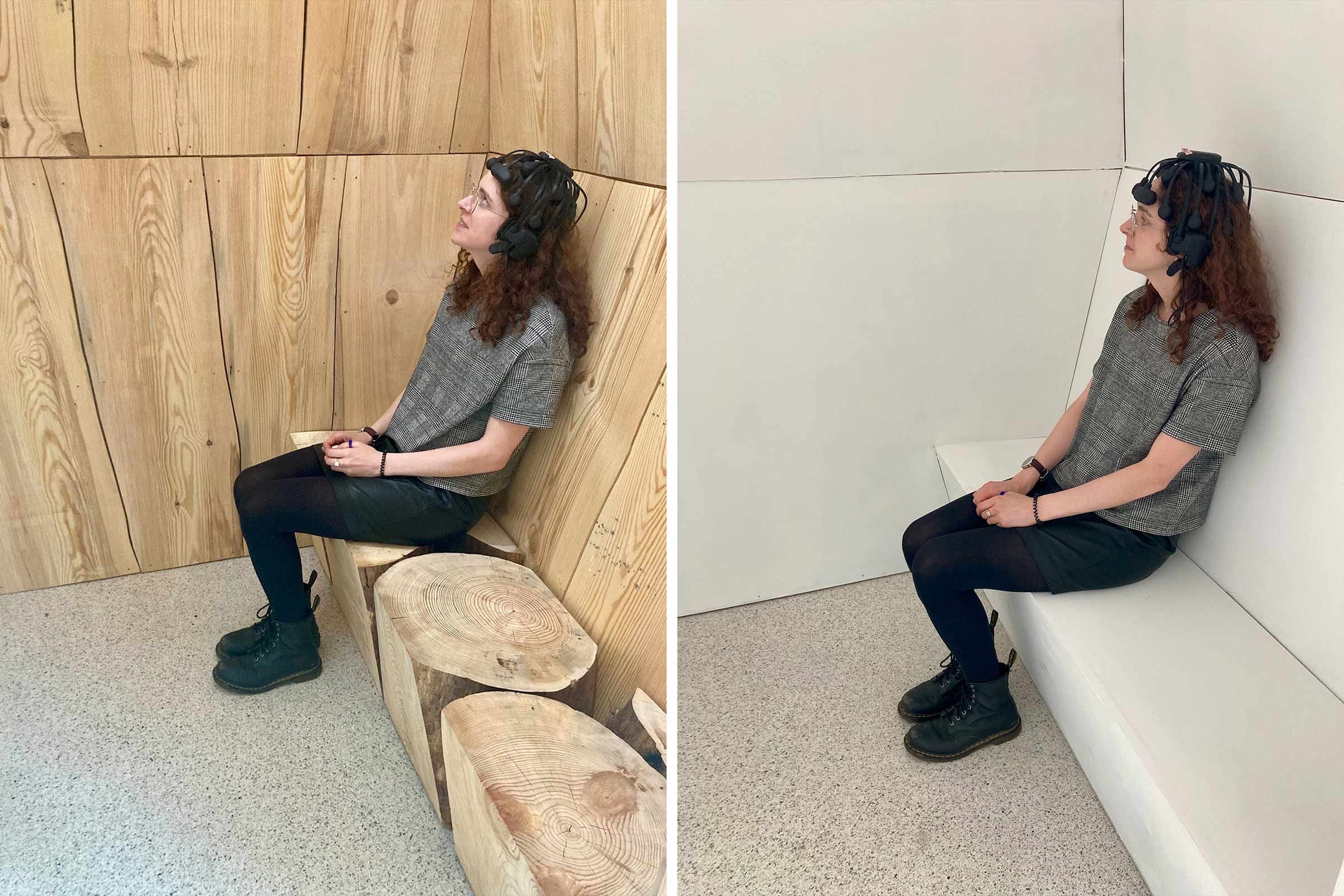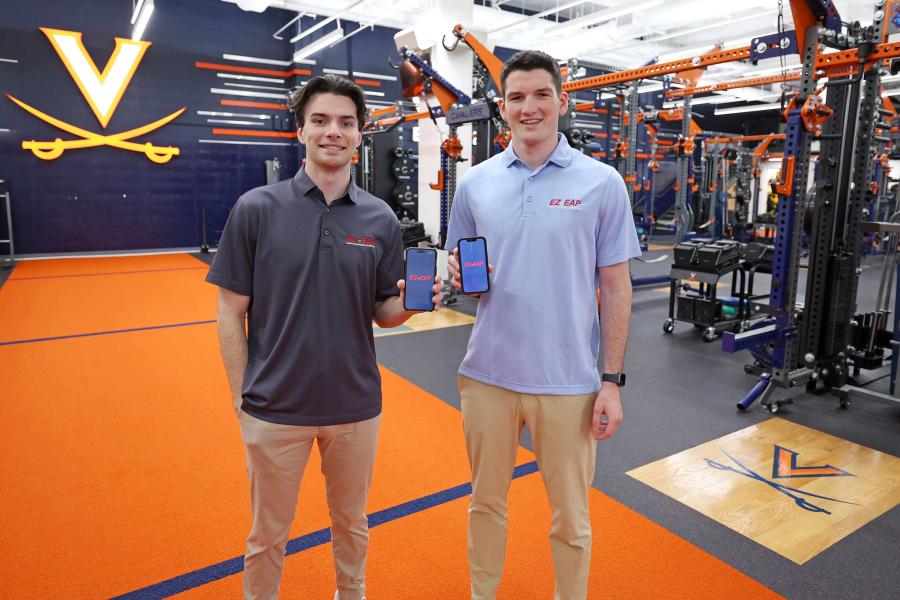If one room makes you anxious and the other makes you chill, you could be a data point proving the benefit of natural building materials.
A team of University of Virginia architecture, environmental psychology and neuroscience professors, graduate students and researchers recently wrapped up such a study and are scouring data to see if natural, or "biophilic," building materials have a soothing effect on people and may be more conducive to mental health than other modern materials.
The study involved more than 30 student participants, a short, stress-inducing math quiz and downtime in two small chambers built to the same specifications, but out of different materials.
One room was made of drywall, a material seen in nearly every home, office and classroom. The other was made of wood, cut from waste logs collected by UVA Sawmilling from the Emmet-Ivy Corridor construction sites. Both were designed to minimize distractions from the outside world.
If the researchers' theory is correct, spending time in the natural chamber should show greater positive change in both self-reported wellbeing and alpha brain wave patterns.
"What we're trying for is the isolation of material as a factor," said lead researcher Katie MacDonald, assistant professor of architecture and co-director of the school's Before Building Laboratory. "Because of the need for control in the study, the geometry of the testing chambers needed to be the exact same."
"We were looking at eliminating views to the outside world and distractions, so there's no window in the space except for a skylight, and the inclusion of a bench over a desk surface was important to preference repose over work," Kyle Schumann, assistant professor of architecture and co-director of the Before Building Laboratory, said.

"There's a framework of biophilic design that it is assumed to bring those benefits into interior space, but there's not a ton of evidence really looking at that," said Julianna Mollica, a doctoral student in the School of Architecture's constructed environment program, who served as project manager for the study protocol.
The study was conducted in Gilmer Hall about a week before Final Exercises, with volunteer student subjects fitted with sensors, measuring and recording brain wave patterns. The subjects were given a short mathematical exercise to induce mild stress and then led to one of the chambers to recover for 10 minutes. The procedure was then repeated with time spent in the other chamber.
"Just walking into the chambers - especially the wooden one - created a unique experience of privacy and ease against the communal space of the atrium at Gilmer Hall," architecture graduate student Margaret Saunders, who worked on the project, said. "It is small enough that you feel nestled by the surrounding walls, but large and open enough that you do not feel cramped."
"I preferred the natural setting for the smells and sights. I would love if there were also greenery incorporated and think we could benefit from more connection to nature in our everyday spaces," said Liz Nigro, a doctoral student at the School of Education and Human Development who participated in the experiment.
Nigro's experience is in line with the study's underlying theory

"We hypothesized that biophilic forms would foster a stronger connection to nature and would really manifest in people's mental health and we would see positive changes in both self-reported mental health and wellbeing and in alpha brain wave activity associated with relaxation," said Jenny Roe, the Mary Irene DeShong Professor of Design and Health/Urban Planning and director of the Center for Design and Health.
Study participant Daniel Langford found both chambers worth visiting.
"In pod 1, I found myself wanting my laptop or iPad to do work. The pod seemed like an ideal space for productivity and isolation," he said. "In pod 2, I felt a desire to slow down and simply relax. I found myself appreciating the natural wood textures and the scent of freshly cut wood."
Other researchers on the study team include Kevin Pelphrey, Harrison-Wood Jefferson Scholars Foundation Professor of Neurology; Tanya Evans, assistant professor, School of Education and Human Development; Stefen Beeler-Duden, research associate, Early Social Development Lab; and Analia Marzoratti, doctoral student, School of Education and Human Development.
Preliminary results of the study should be available in early fall.
"If what we hypothesize is actually found, that the natural environment actually does help foster some management of stress, I think implications on Grounds - for UVA Health, the hospital and the cancer center - and beyond is how these types of immersive structures could be used in high-stress settings," said Roe.
"A lot of students, staff and faculty experience high levels of stress at certain times of the year," she said. "Maybe spending 10 minutes in a compact structure that didn't cost a huge amount to build could make a difference."









